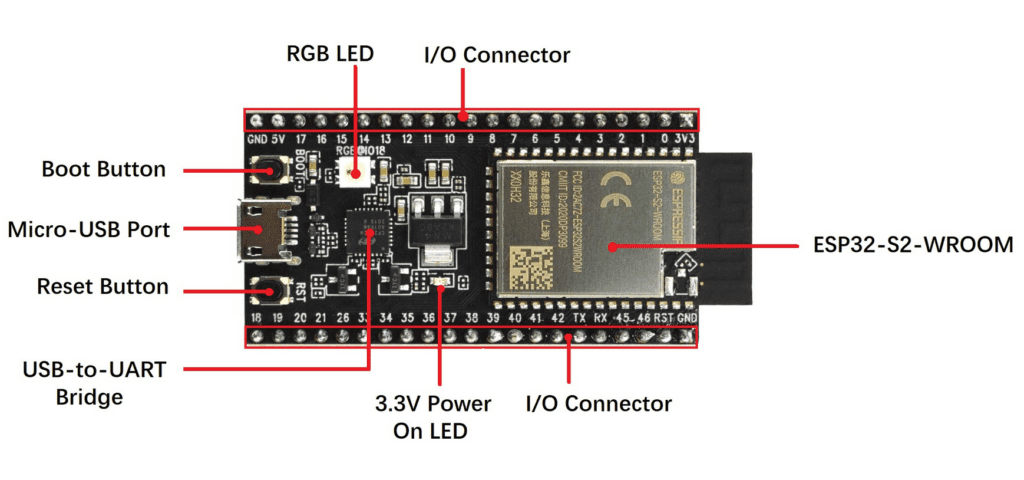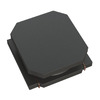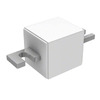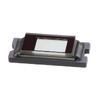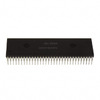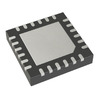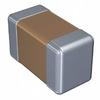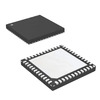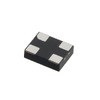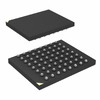ESP32 or ESP8266: Which Microcontroller Best Fits Your Needs?
In the microcontroller technology, the comparison between the ESP32 and the ESP8266 presents a fascinating narrative of advancement and application-specific design. Through a blend of technical insights and practical assessments, this article will guide you through the nuanced differences, strengths, and limitations of these widely used microcontrollers by Espressif Systems. From smart homes to industrial automation, the implications of choosing between the ESP32 and the ESP8266 are profound and multifaceted. By the end of this article, you'll be equipped with a deeper understanding of which microcontroller best suits your needs, balancing cost, functionality, and project complexity.Catalog
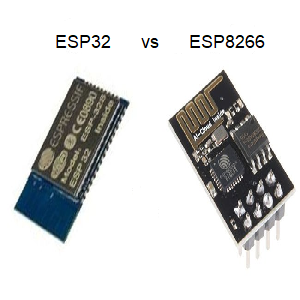
ESP32 Advantages and Limitations
The ESP32, an innovative microcontroller series by Espressif Systems, follows the popularity of the ESP8266. It integrates dual cores and an ultra-low-power coprocessor, ensuring an enhanced security profile compared to its predecessor.
Strengths of ESP32
The ESP32 is distinguished by its dual-core processors, capable of operating between 160MHz and 240MHz. Supporting both Wi-Fi and Bluetooth, it empowers users with flexible control and monitoring capabilities, all at a competitive cost. With an increased number of GPIOs and speeds up to 150Mbps, the ESP32 excels in complex scenarios such as smart home devices, industrial automation, and wearable technology. Its efficiency in handling concurrent tasks makes it invaluable in multitasking environments. Furthermore, the ESP32 is equipped with various peripherals, including capacitive touch sensors, ADCs, DACs, and UARTs. These peripherals extend its applicability in sensor networks and IoT projects. The integration of low-energy Bluetooth is advantageous for energy-sensitive projects, like battery-operated systems.
Limitations of ESP32
Though the ESP32 boasts advanced features, its price is higher compared to the ESP8266, posing a challenge for budget-conscious projects. However, the enhanced capabilities and security often justify this cost. A thorough evaluation of the project's requirements is use to determine if the ESP32's additional features are needed. Programming and power management complexities present another consideration. Other need to invest time to fully grasp these aspects, tapping into the ESP32’s full potential. Understanding these details highlights that choosing the ESP32 should be a balance between the project's demands and the microcontroller's rich features, ensuring that the added cost and complexity provide real benefits. This thoughtful approach is similar to the strategy behind numerous successful technology implementations across different industries.
ESP8266 Advantages and Limitations
The ESP8266 is a multifaceted system-on-chip (SoC) that integrates a Wi-Fi module and an IP/TCP protocol stack. It empowers microcontrollers to establish Wi-Fi connections, and it can either host applications directly or autonomously handle Wi-Fi network functions.
Advantages of ESP8266
The onboard processing and storage capabilities of this chip are substantial, enabling seamless collaboration with a multitude of sensors and applications. Its high level of integration minimizes reliance on external circuits, simplifying the overall design process. Equipped with APSD support, the ESP8266 adeptly balances Bluetooth and VoIP coexistence, enhancing power management efficiency. Thanks to its self-calibrating RF, the chip can operate under diverse conditions without requiring external RF components. This integration within a single chip allows you to often reduced development time and costs, leading to efficient project completions and resource savings.
Limitations of ESP8266
Even with its substantial advantages, the ESP8266 is not without its shortcomings. It lacks native Bluetooth support, which curtails its compatibility with Bluetooth-enabled devices. The chip has fewer General Purpose Input/Output (GPIO) pins compared to more advanced alternatives like the ESP32, a factor that can impede complex applications needing extensive peripheral connections. Often weigh these limitations carefully against the specific demands of their projects, making strategic choices for component selection to best meet your design goals.
Specifications of ESP32 and ESP8266
|
Specification |
ESP8266 |
ESP32 |
|
MCU |
Xtensa® Single-Core 32-bit L106 |
Xtensa® Dual-Core 32-bit LX6 600 DMIPS |
|
802.11 b/g/n Wi-Fi |
Yes, HT20 |
Yes, HT40 |
|
Bluetooth |
None |
Bluetooth 4.2 and below |
|
Typical Frequency |
80 MHz |
160 MHz |
|
SRAM |
160 kBytes |
512 kBytes |
|
Flash |
SPI Flash, up to 16 MBytes |
SPI Flash, up to 16 MBytes |
|
GPIO |
17 |
36 |
|
Hardware / Software PWM |
None / 8 Channels |
1 / 16 Channels |
|
SPI / I2C / I2S / UART |
2/1/2/2 |
4/2/2/2 |
|
ADC |
10-bit |
12-bit |
|
CAN |
None |
1 |
|
Ethernet MAC Interface |
None |
1 |
|
Touch Sensor |
None |
Yes |
|
Temperature Sensor |
None |
Yes |
|
Working Temperature |
-40°C - 125°C |
-40°C - 125°C |
Differences Between ESP8266 and ESP32
ESP8266 Features
The ESP8266, a budget-friendly microchip, was crafted with Wi-Fi connectivity as its primary focus. It includes 16 GPIO pins and supports interfaces such as SPI, I2C, and ADC. It lacks certain advanced functionalities, including ethernet connectivity, touch sensors, ecure boot or encryption and temperature sensors. Its straightforward design and affordability render it perfect for fundamental IoT projects where intricate features are less important. For example, its efficient power consumption and nature have made it a go-to for basic home automation systems, such as those used to control lights and monitor primary environmental factors.
ESP32 Features
In contrast, the ESP32 is a marked progression in both functionality and performance. Equipped with 34 GPIO pins, a dual-core processor, and numerous I/O connectors, it opens up a world of possibilities for more elaborate projects. Additional features enhance its utility touch sensors, temperature sensors, and secure boot and on-chip encryption. The ESP32 also supports Bluetooth, enhancing its connectivity options. This makes it ideal for wearable devices and more advanced home automation systems. The dual-core processor's multitasking capabilities further elevate its performance in data-intensive applications.
Performance and Security
The enhanced security features of the ESP32 offer a distinct advantage over the ESP8266. Secure boot and on-chip encryption ensure firmware integrity and protect data from unauthorized access, making it well-suited for sensitive applications like industrial automation and healthcare monitoring systems. Additionally, its dual-core architecture provides more computational power and efficiency, for data processing and complex control systems.
Diverse Applications
The ESP32's adaptability and robustness have proven beneficial in various scenarios. Complex IoT networks, such as smart city infrastructures, leverage its advanced features for optimized resource management. Wearable technology also benefits from its balanced power efficiency and processing capabilities, enabling health monitoring and feedback systems.
Performance Metrics
The ESP32's dual-core processor allows for concurrent task execution for complex multitasking projects. The single-core processor of ESP8266, while adequate for simpler applications, might struggle to handle tasks requiring extensive computational power.
Connectivity Possibilities
The ESP32 supports both Wi-Fi and Bluetooth, including BLE (Bluetooth Low Energy), broadening its utility in IoT projects needing short-range communication or mesh networking. This makes connecting to various sensors and peripherals simpler, enhancing overall system functionality. The ESP8266, though limited to Wi-Fi, is still effective for web-based projects or data logging to online platforms.
GPIO Pin Accessibility
With more GPIO pins, the ESP32 allows for the connection of numerous sensors, actuators, and other peripherals, making it ideal for advanced IoT systems or automation setups. The ESP8266, with fewer GPIO pins, remains apt for simpler projects that require fewer connections.
Economic Viability
The ESP8266's lower cost is attractive for budget-conscious projects or large-scale deployments. This cost advantage makes it a practical choice for educational purposes, rapid prototyping, or applications where extensive computational power isn't needed.
Power Efficiency
Power consumption is a great factor. The ESP32 offers advanced power management with various low-power modes, making it suitable for battery-operated devices. While the ESP8266 also provides acceptable power efficiency, it may not match the ESP32's capabilities in energy conservation.
Specific Use Cases
Choosing between the ESP32 and ESP8266 often depends on project specifics. For example, in smart home environments requiring simultaneous multi-sensor data collection and seamless hub communication, the ESP32's multitasking and Bluetooth capabilities are beneficial. For a weather station project where basic data logging and Wi-Fi connectivity are sufficient, the ESP8266 presents an economical and efficient choice.
Internal Structures of ESP32 and ESP8266
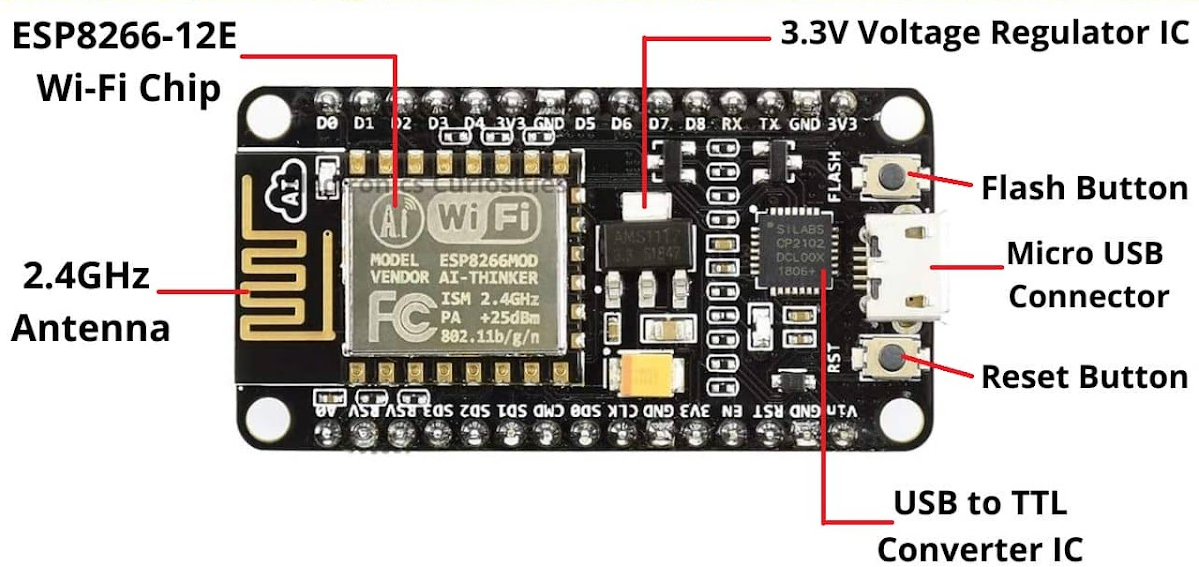
Core System
Both the ESP32 and ESP8266 encompass fundamental elements including cache, SRAM, JTAG, and ROM. The divergence between these two lies in their processors, the ESP32-C2 is equipped with a RISC-V 32-bit processor, whereas the ESP8266 utilizes a Tensilica L106 processor. This difference influences their performance characteristics. The RISC-V architecture in the ESP32-C2 brings enhanced computational efficiency and flexibility, making it advantageous in handling complex IoT applications. These capabilities make the ESP32-C2 an enticing choice for you seeking create responsive and adaptive systems.
Wi-Fi Radio Frequency and Baseband
Both chips support 2.4GHz transmission, ensuring compatibility with standard Wi-Fi networks. However, the ESP32-C2 and ESP32-C3 models extend their capabilities by including support for Bluetooth LE v5.0. This addition allows for versatile wireless communication. Both Wi-Fi and Bluetooth functionalities can now be utilized in a single project. These advanced features become beneficial in scenarios involving low-power communication over short distances, adding an extra layer of connectivity options without increasing power consumption. This dual-functionality can be thrilling for projects requiring seamless integration of multiple communication protocols.
Peripherals
The ESP32 and ESP8266 support a range of common peripherals such as GPIOs, UART, I2C, SPI, and temperature sensors. The ESP32-C2 differentiates itself with additional functionalities like brownout detection and eFuse controllers, which enhance system stability and security. Many gain robust tools to manage power fluctuations and secure configuration settings. Conversely, the ESP8266 includes I2S and SDIO interfaces, which allow for more specialized applications such as audio processing and communication with SD cards. This rich variety in peripheral support gives you substantial flexibility in tailoring solutions to meet specific use case needs, whether aiming for broad compatibility or specialized functionality.
Real-time Clock (RTC)
Both chips feature common Real-time Clock (RTC) components, for timekeeping in low-power modes. The ESP32-C3 stands out with RTC memory capable of storing real-time data, enhancing its utility in time-sensitive applications. RTC memory ensures efficient data handling during deep sleep modes. Important information remains accessible without power consumption. These advancements play a role in applications where uninterrupted timekeeping is require, such as in environmental monitoring systems and smart wearables. Ensuring that time-sensitive data is accurately maintained even during low-power states can be the deciding factor in the success of such projects.
The diverse strengths and enhancements found in the ESP32 and ESP8266 platforms cater to a wide spectrum of applications, from responsive IoT devices to specialized use cases requiring unique peripheral support. An in-depth understanding of these internal structures allows you to leverage appropriate features for optimal performance and efficiency, creating choices tailored to specific project requirements.
ESP32 and ESP8266 Application Scenarios
Both the ESP32 and ESP8266 showcase remarkable versatility, offering extensive applications in numerous fields due to their robust functionalities and adaptability.
Telemetry and Sensor Networks
The ability to support Wi-Fi triangulation makes the ESP32 and ESP8266 valuable assets in telemetry and sensor networks. Utilizing these chips can lead to precise location tracking and data collection, bolstering system efficiency. In smart agriculture systems, for example, these chips can provide immediate soil moisture and temperature readings, refining water usage and crop management strategies, ensuring a more dynamic and responsive agricultural process.
Automated Point-of-Sale (POS) Systems
When incorporated into automated point-of-sale systems, the ESP32 and ESP8266 facilitate seamless connectivity, ensuring secure and efficient transaction handling. These chips enable rapid and secure data transmission between POS terminals and central servers, enhancing transaction speed and accuracy. Lower hardware costs and improved your satisfaction through faster checkout processes.
Industrial Safety Monitoring
In the context of industrial safety monitoring, the ESP32 and ESP8266 are instrumental in maintaining workplace safety. Coupled with various sensors and actuators, these chips can promptly monitor hazardous conditions such as gas leaks or equipment malfunctions. This integration allows for rapid activation of safety protocols, minimizing risks and ensuring worker protection. Previous implementations in factories have shown a marked decrease in incident response times, contributing to better compliance with safety regulations.
Wireless CCTV Systems
Wireless CCTV systems benefit greatly from the connectivity and power efficiency of these chips. They support the transmission of high-definition video streams over Wi-Fi, guaranteeing continuous surveillance. This capability is exceptionally beneficial in remote or extensive installations where traditional wiring would be impractical. Security agencies highlight the flexibility and reduced disruption of setups, resulting in comprehensive and economical surveillance solutions.
Robotics
In robotics, the ESP32 and ESP8266 provide wireless communication features that enable remote control and monitoring. Their integration with various sensors and controllers permits advanced functionalities such as autonomous navigation and environmental interaction. Educational institutions have made strides in developing intricate robotic systems using these chips, fostering both innovation. The adaptability and dependable performance of the ESP32 and ESP8266 show their role in diverse and innovative applications. They contribute heavily to the advancement of smart systems, influencing fields from agricultural monitoring to advanced robotics. The ESP32 and ESP8266, with their broad applicability and impressive integration capabilities, are integral to modern wireless communication solutions, showcasing their vast potential across various industries.
Conclusion
The choice between the ESP32 and ESP8266 hinges on the specific requirements of the project at hand considering factors like cost constraints, performance needs, and desired functionalities. This article has laid out the base for understanding these microcontrollers' capabilities, helping to navigate the decision-making process by aligning technical specifications with project goals. As technology continues to evolve, the ESP32 and ESP8266 stand as testaments to Espressif Systems' commitment to innovation and versatility in the microcontroller market.
About us
ALLELCO LIMITED
Read more
Quick inquiry
Please send an inquiry, we will respond immediately.
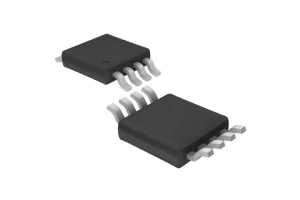
Exploring the LTC2055 Amplifier: Features, Specifications, and Applications
on October 8th
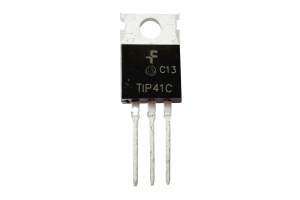
A Guide to TIP41C Transistor Biasing and Heat Management
on October 8th
Popular Posts
-

What is GND in the circuit?
on January 1th 3105
-

RJ-45 Connector Guide: RJ-45 Connector Color Codes, Wiring Schemes, R-J45 Applications, RJ-45 Datasheets
on January 1th 2671
-

Understanding Power Supply Voltages in Electronics VCC, VDD, VEE, VSS, and GND
on November 15th 2209
-

Fiber Connector Types: SC Vs LC And LC Vs MTP
on January 1th 2182
-

Comparison Between DB9 and RS232
on January 1th 1802
-

What Is An LR44 Battery?
Electricity, that ubiquitous force, quietly permeates every aspect of our daily lives, from trivial gadgets to life-threatening medical equipment, it plays a silent role. However, truly grasping this energy, especially how to store and efficiently output it, is no easy task. It is against this background that this article will focus on a type of coin cell battery that may seem insignificant on the...on January 1th 1774
-

Understanding the Fundamentals:Inductance Resistance, andCapacitance
In the intricate dance of electrical engineering, a trio of fundamental elements takes center stage: inductance, resistance, and capacitance. Each bears unique traits that dictate the dynamic rhythms of electronic circuits. Here, we embark on a journey to decipher the complexities of these components, to uncover their distinct roles and practical uses within the vast electrical orchestra. Inductan...on January 1th 1728
-

CR2430 Battery Comprehensive Guide: Specifications, Applications and Comparison to CR2032 Batteries
What is CR2430 battery ?Benefits of CR2430 BatteriesNormCR2430 Battery ApplicationsCR2430 EquivalentCR2430 VS CR2032Battery CR2430 SizeWhat to look for when buying the CR2430 and equivalentsData Sheet PDFFrequently Asked Questions Batteries are the heart of small electronic devices. Among the many types available, coin cells play a crucial role, commonly found in calculators, remote controls, and ...on January 1th 1673
-

What Is RF and Why Do We Use It?
Radio Frequency (RF) technology is a key part of modern wireless communication, enabling data transmission over long distances without physical connections. This article delves into the basics of RF, explaining how electromagnetic radiation (EMR) makes RF communication possible. We will explore the principles of EMR, the creation and control of RF signals, and their wide-ranging uses. The article ...on January 1th 1670
-

Comprehensive guide to hFE in transistors
Transistors are crucial components in modern electronic devices, enabling signal amplification and control. This article delves into the knowledge surrounding hFE, including how to select a transistor's hFE value, how to find hFE, and the gain of different types of transistors. Through our exploration of hFE, we gain a deeper understanding of how transistors work and their role in electronic circu...on November 15th 1631
